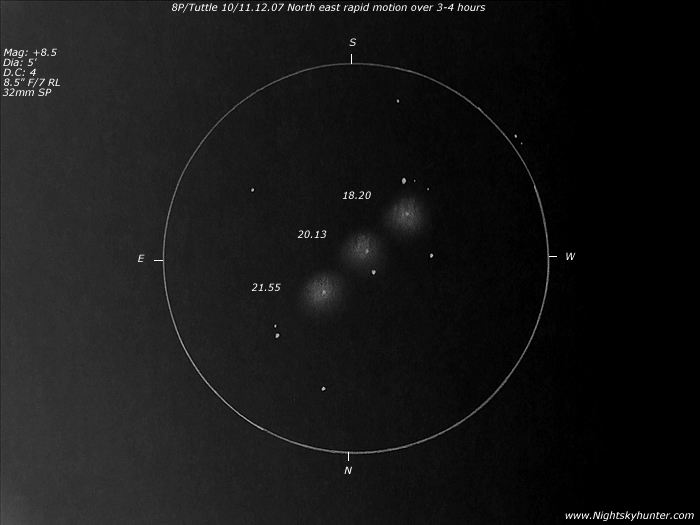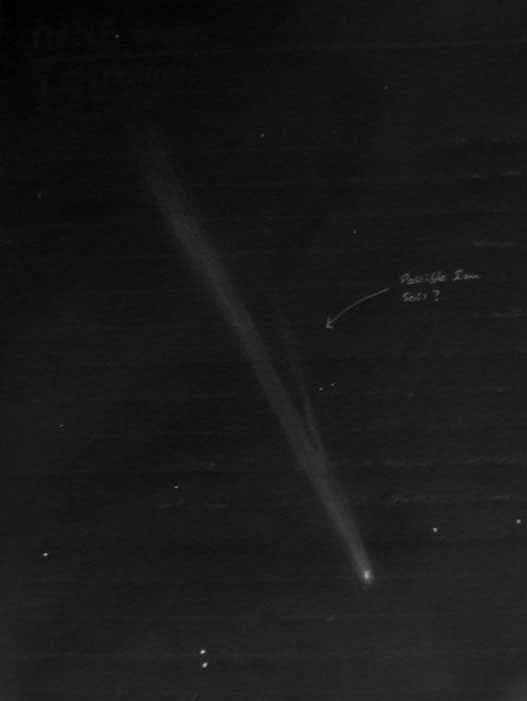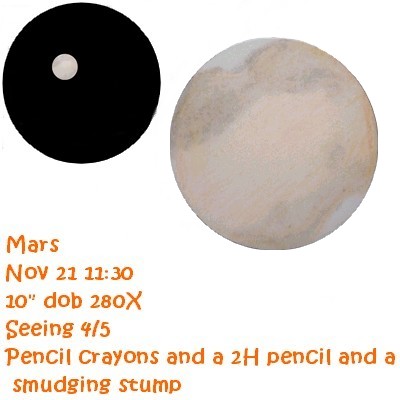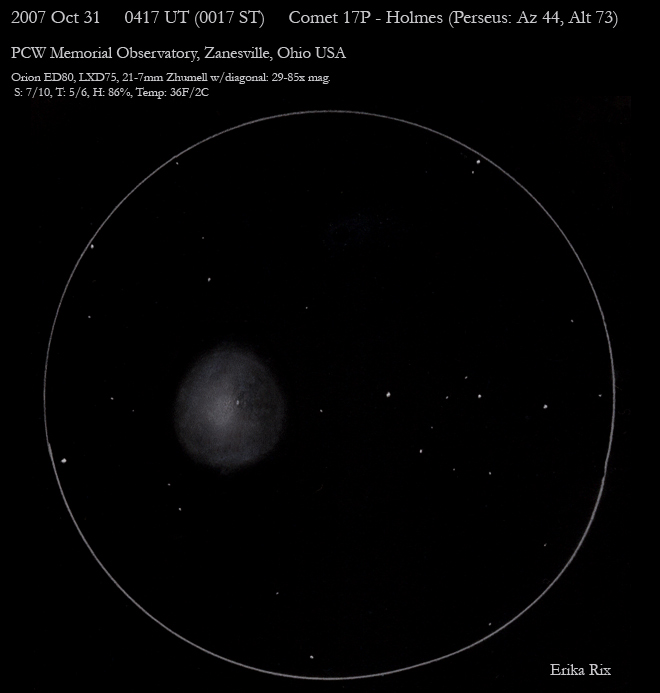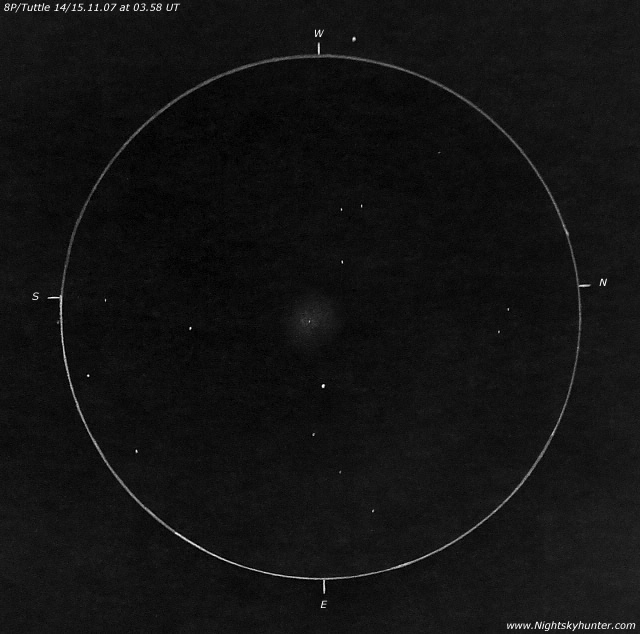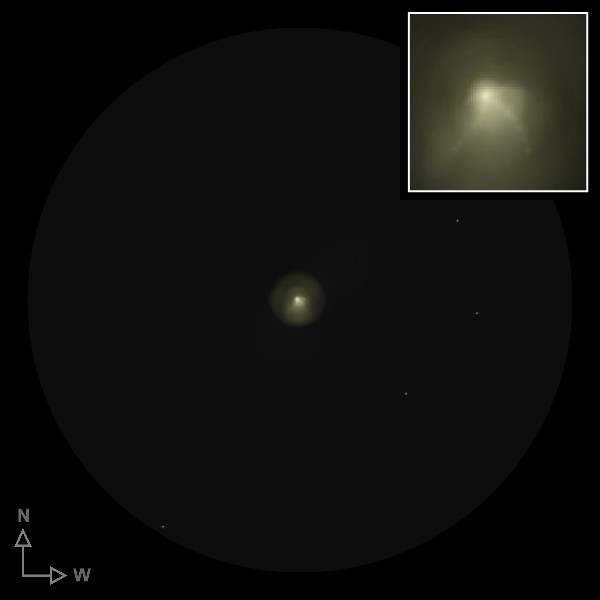 17P/Holmes
17P/Holmes
Periodic Comet
By Eric Graff
Parks Astrolight EQ6 • 6″ f/6 Newtonian Reflector
7.5mm Parks Gold Series Plössl • 120x, 26′ Field of View
26 October 2007 • 09:45-10:15 UT
On the 23-24th of October, 2007 Comet 17P/Holmes experienced a major outburst, increasing its brightness 1 million times in just a few short hours, rising from 17th to 2nd magnitude. Such events are usually caused by the sudden release of gas and/or dust particles from the comet (the yellow color suggests the latter, in this case). During the early morning hours of October 26, the smoke from the Southern California fires had cleared sufficiently to make this observation. To the unaided eye, 17P rivaled the brightest “star” in the constellation Perseus – appearing only slightly less prominent than magnitude 1.8 Alpha (α) Persei (Mirfak). In 10×50 binoculars it had a bright yellow hue and looked slightly fuzzy or unfocused.
Through the eyepiece of my telescope the golden hue was striking as was its brilliance, near-perfect circular symmetry, and sharp stellar pseudo-nucleus. It resembled a huge, bright, yellow planetary nebula about 4′ in diameter. At high magnifications (120x, 240x) the central regions of the comet displayed considerable detail. A bright arc of material extends from the nucleus from south to west, with three prominent streamers involved in and extending from this arc. The circular coma has a somewhat annular appearance. Beyond the bright circular coma, two faint plumes of material, one to the northwest (elongated) and the other to the south-southeast (very broad and diffuse) could be detected by gently rocking the scope from side to side.
This comet was discovered by British astronomer Edwin Holmes on November 6, 1892 while conducting observations of the Andromeda Galaxy (M31). The entirety of its 6.88 year orbit is spent between the orbits of Mars and Jupiter.

